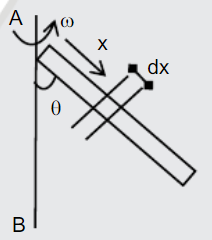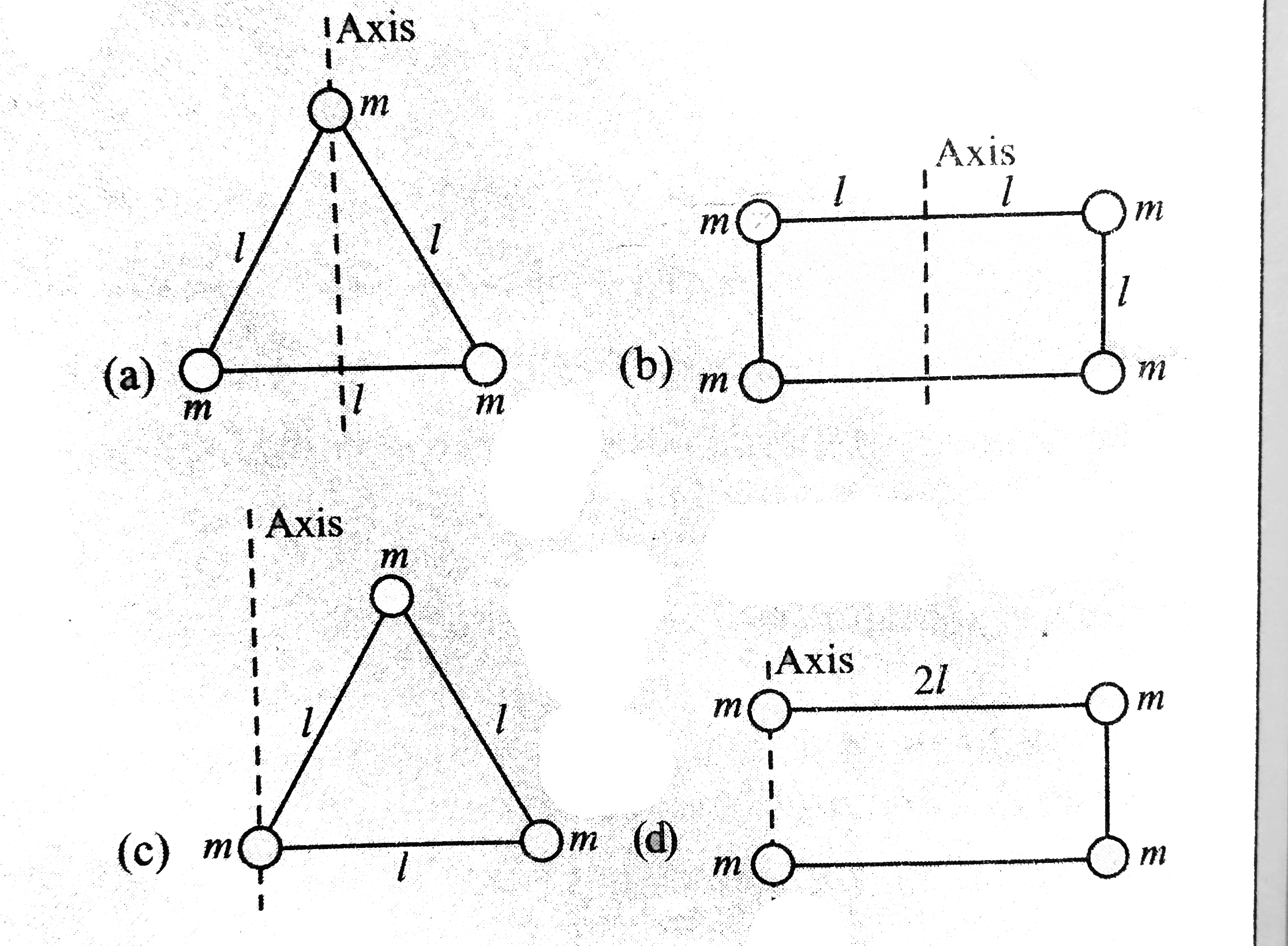Two bodies have their moments of inertia I and 2I, respectively about their axis of rotation. If their kinetic energies of rotation are equal, their angular velocity will be in the ratio
2:1
1:2
√2:1
1:√2
The correct Answer is:C
To solve the problem, we need to find the ratio of the angular velocities of two bodies with different moments of inertia but equal kinetic energies of rotation.
1. Identify the given data:
- Moment of inertia of the first body, I1=I
- Moment of inertia of the second body, I2=2I
- Kinetic energies of both bodies are equal.
2. Write the formula for kinetic energy of rotation:
The kinetic energy K of a rotating body is given by the formula:
K=12Iω2
where I is the moment of inertia and ω is the angular velocity.
3. Set up the equation for kinetic energies:
For body 1:
K1=12I1ω21=12Iω21
For body 2:
K2=12I2ω22=12(2I)ω22=Iω22
Since the kinetic energies are equal, we can set K1=K2:
12Iω21=Iω22
4. Cancel out common terms:
We can cancel I from both sides (assuming I≠0):
12ω21=ω22
5. Rearrange the equation:
Multiply both sides by 2:
ω21=2ω22
6. Take the square root:
Taking the square root of both sides gives:
ω1ω2=√2
7. Express the ratio:
Therefore, the ratio of angular velocities is:
ω1:ω2=√2:1
Final Answer:
The ratio of angular velocities ω1:ω2 is √2:1.
- Moment of inertia of the first body, I1=I
- Moment of inertia of the second body, I2=2I
- Kinetic energies of both bodies are equal.
The kinetic energy K of a rotating body is given by the formula:
K=12Iω2
where I is the moment of inertia and ω is the angular velocity.
For body 1:
K1=12I1ω21=12Iω21
For body 2:
K2=12I2ω22=12(2I)ω22=Iω22
Since the kinetic energies are equal, we can set K1=K2:
12Iω21=Iω22
We can cancel I from both sides (assuming I≠0):
12ω21=ω22
Multiply both sides by 2:
ω21=2ω22
Taking the square root of both sides gives:
ω1ω2=√2
Therefore, the ratio of angular velocities is:
ω1:ω2=√2:1
The ratio of angular velocities ω1:ω2 is √2:1.
Topper's Solved these Questions
Similar Questions
Knowledge Check
Two bodies have their moments of inertia I and 2I respectively about their axis of rotation. If their kinetic energies of rotation are equal, their angular momenta will be in the ratio.
A12B√2C1:√2D21A wheel of mass 5kg and radius 0.40m is rolling on a road without sliding with angular velocity 10rads−1. The moment of ineria of the wheel about the axis of rotation is 0.65kgm2. The percentage of kinetic energy of rotate in the total kinetic energy of the wheel is.
A22.4%B11.2%C88.8%D44.8%Two discs of moments of inertia I1 and I2 about their respective axes (normal to the disc and passing through the centre), and rotating with angular speed ω1 and ω2 are brought into contact face to face with their axes of rotation coincident. What is the loss in kinetic energy of the system in the process?
AI1I2(ω1−ω2)22(I1+I2)BI1I2(ω1−ω2)22(I1+I2)CI1I2(ω1+ω2)2I1−I2DI1I2(ω1+ω2)22(I1−I2)
A body is rotating with angular momentum L. If I is its moment of inertia about the axis of rotation is I, its kinetic energy of rotation is
View SolutionThe moment of inertia of a body about a given axis of rotation depends upon :-
View SolutionTwo discs A and B are mounted coaxially ona vertical axle. The discs have moments of inertia l and 2l respectively about the common axis. Disc A is imparted an initial angular velocity 2ω using the centre potential energy of a spring compressed by a distance x1. Disc B is imparted angular velocity ω by a spring having the same spring constant and compressed by a distance x2. Both the disc rotate in the clockwise direction.
The loss of kinetic energy the above process is -
View SolutionTwo discs A and B are mounted co-axially one vertical axle. The discs have moments of inertia l and 2l respectively about the common axis. Disc A is imparted an initial angular velocity 2ω using the centre potential energy of a spring compressed by a distance x1. Disc B is imparted angular velocity ω by a spring having the same spring constant and compressed by a distance x2. Both the disc rotate in the clockwise direction.
The rotation x1/x2 is.
View SolutionA rod is rotating with angular velocity ω about axis AB. Find cosθ.

View Solution

